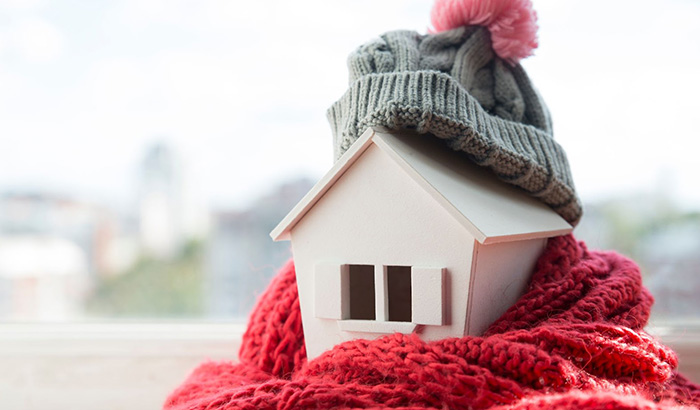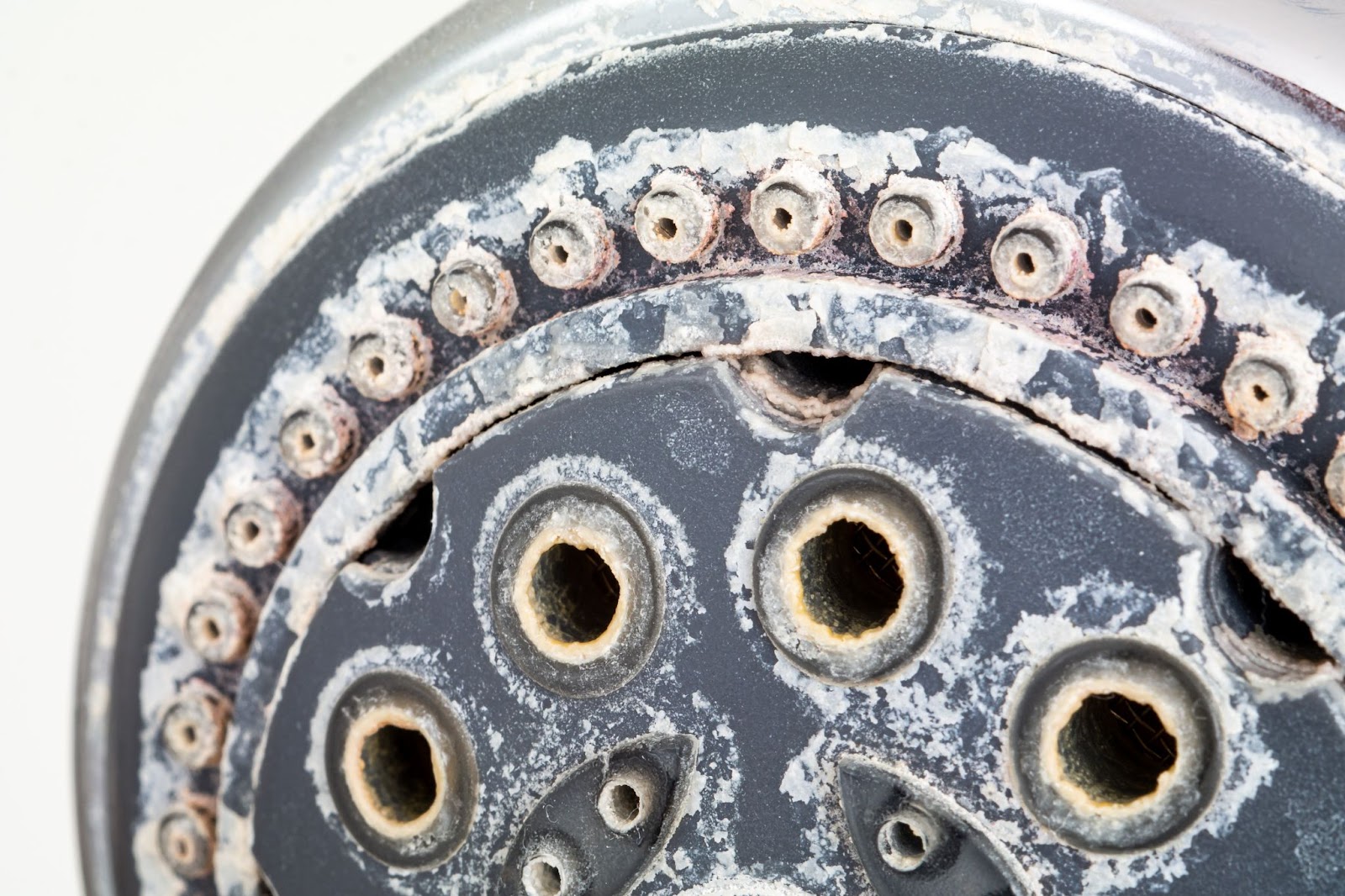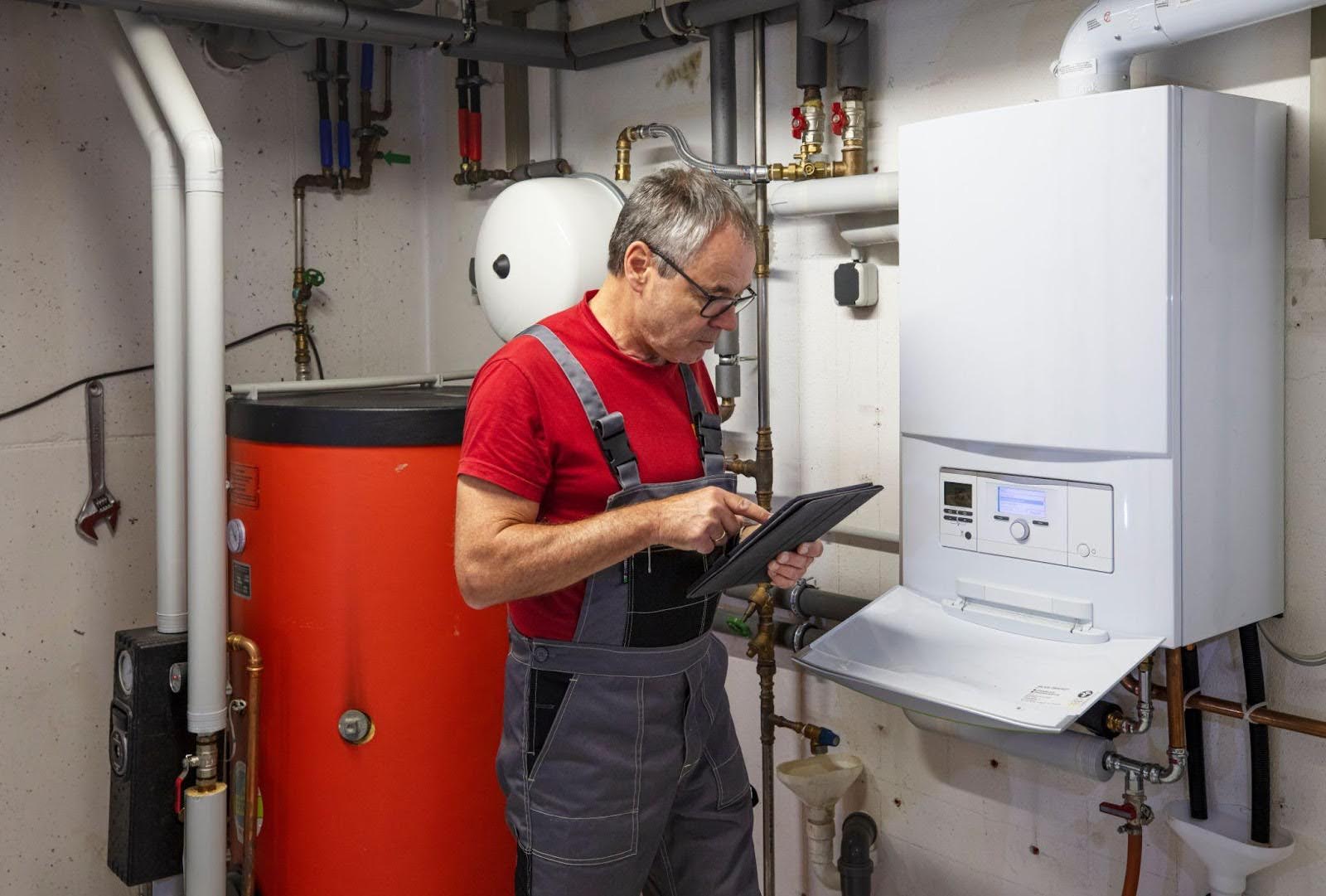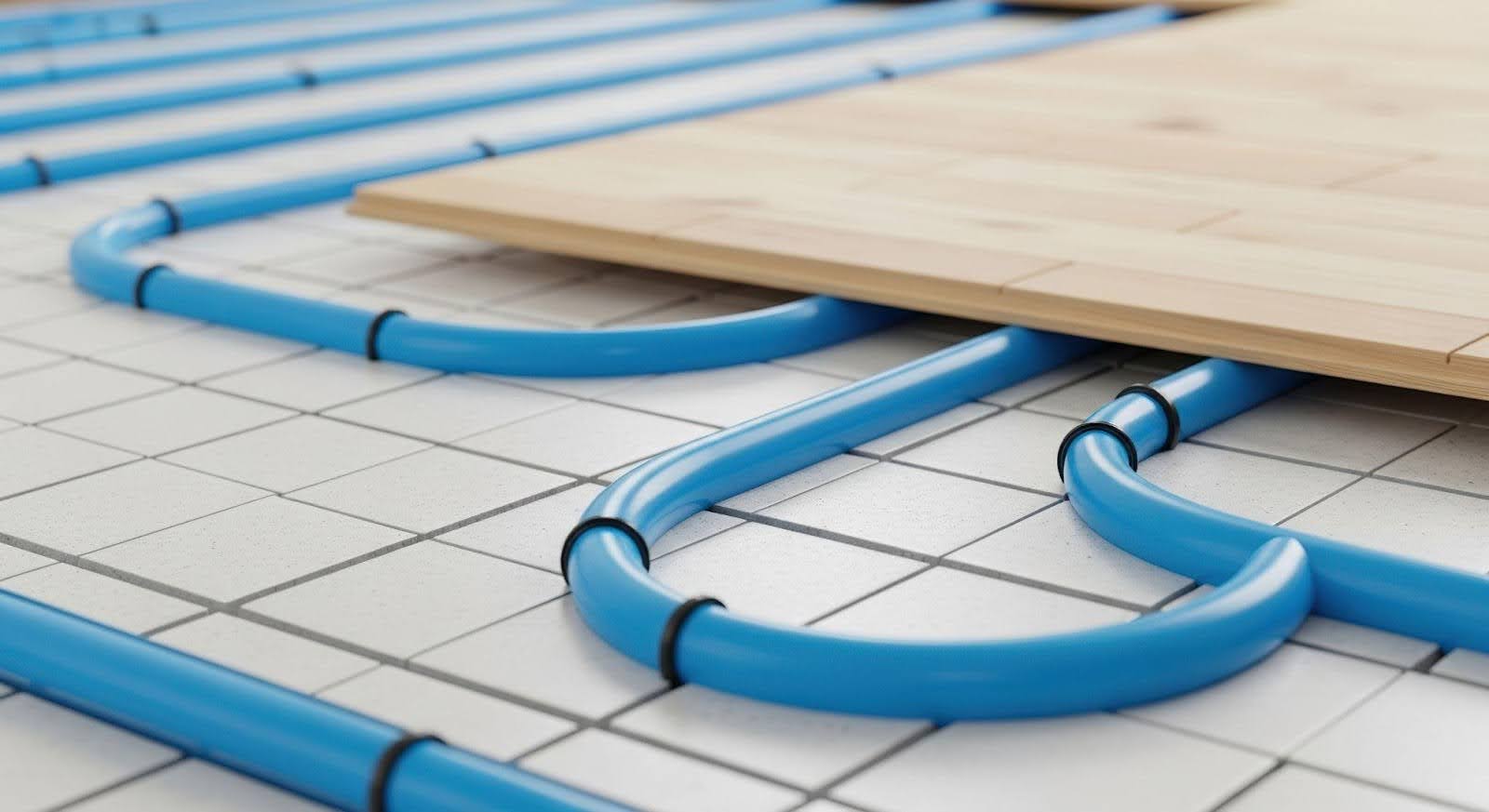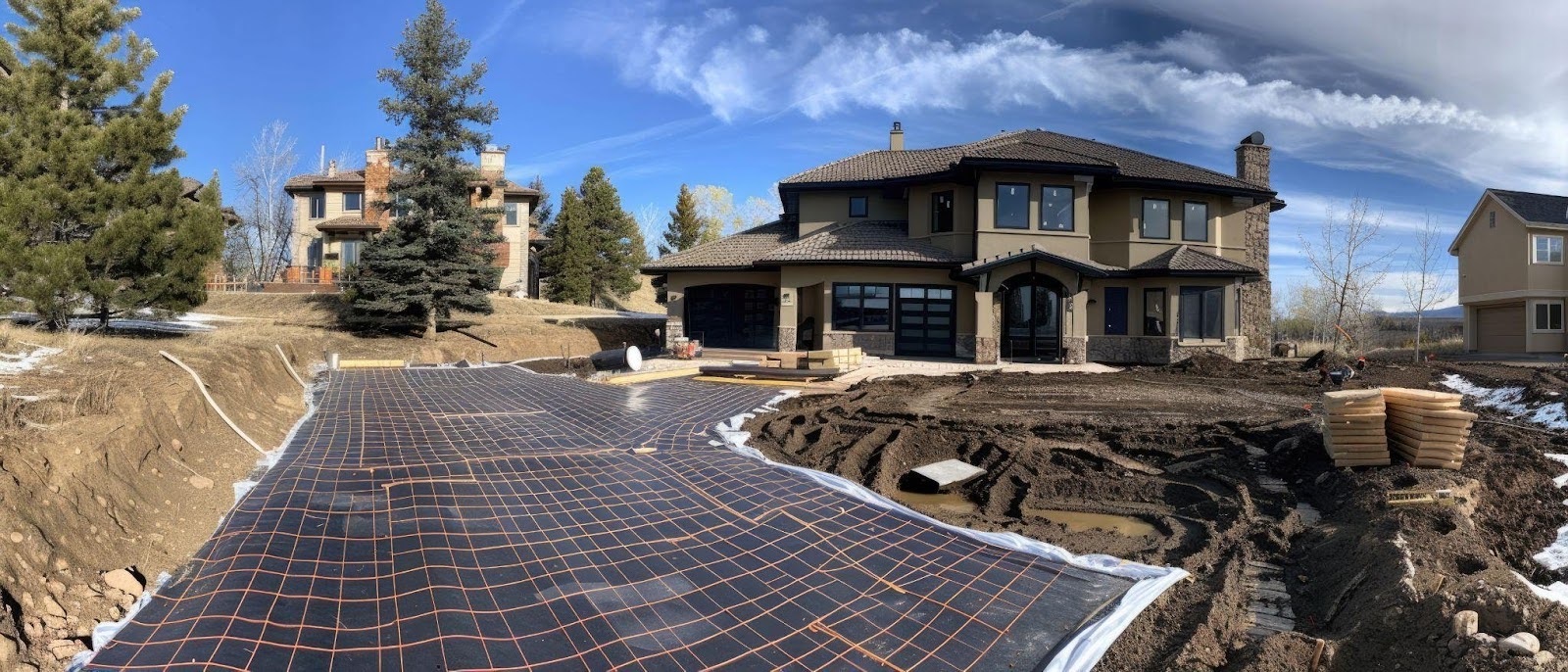Deciding between radiant heating and traditional forced air for the best heating system for your home is important for comfort and energy efficiency. Both systems offer unique benefits and drawbacks, making the choice not merely about preference but also what aligns best with your home’s needs.
This article delves into the intricate world of home heating, comparing radiant heating with traditional forced air systems. We will explore energy efficiency, comfort levels, air quality, and the costs of installation and upkeep, helping you make an informed decision for your home’s warmth.
Radiant heating
Radiant heating provides a unique way to warm up your home by directly transferring heat from a warm surface to the people and objects in the room using infrared radiation. Unlike traditional forced-air systems that blow heated air through ducts, radiant heating, especially underfloor systems, uses pipes or electric elements beneath the floor to evenly distribute heat.
This method offers a more hypoallergenic environment by reducing airborne allergens but also enhances comfort by eliminating cold spots and distributing heat uniformly.
How radiant heating works
In underfloor systems, either hot water circulates through pipes (hydronic system) or electric elements generate heat (electric system), warming up the floor and, subsequently, the room. This method ensures consistent, gentle warming across the space, avoiding the drafts and noise associated with forced-air systems.
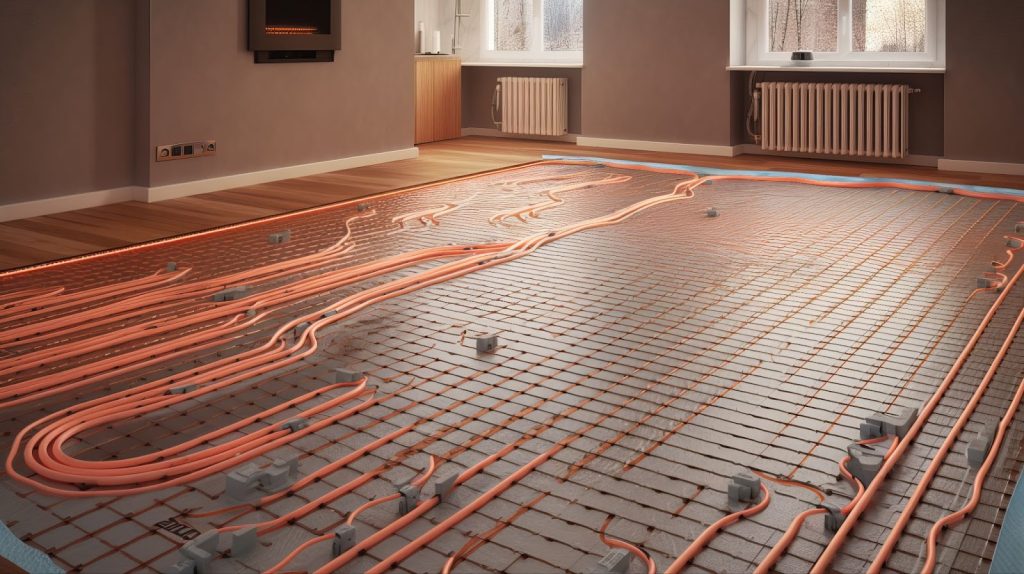
Benefits of radiant heating
Radiant heating is known for its energy efficiency, potentially lowering heating costs using less energy than conventional systems. The absence of blowers means it operates silently and without circulating dust or allergens. Additionally, it allows more freedom in room design since there are no vents or grilles to consider, offering both aesthetic and practical benefits.
Factors to consider
However, choosing radiant heating involves several considerations:
- Installation costs: Initial setup can be more expensive, particularly if integrated into an existing home.
- Flooring compatibility: The type of flooring you have will affect installation, with certain materials requiring specific setups.
- Energy sources: The cost and availability of electricity or boiler systems in your area impacts operational costs.
- Responsiveness: Radiant systems typically take longer to heat a room than forced-air units.
Before deciding, weigh these factors against the benefits to determine if radiant heating is the right choice for your home, considering your specific needs and lifestyle.
Traditional Forced Air
Traditional forced-air systems are a staple in many homes, utilizing a furnace and a network of ducts to distribute warm air across various rooms. These systems draw interior air, heat it using a furnace powered by natural gas, electricity, or oil, and then push it out through vents.
This method also cools homes during warmer months when connected to an air conditioner, offering a flexible solution for year-round climate control.
How it works
When the thermostat detects a drop in temperature, it activates the furnace. The air, heated to the desired temperature, is then propelled by a blower motor through the ducts and out through room vents, effectively raising the room’s temperature. The system also recycles air back to the furnace via return ducts to maintain consistent warmth.
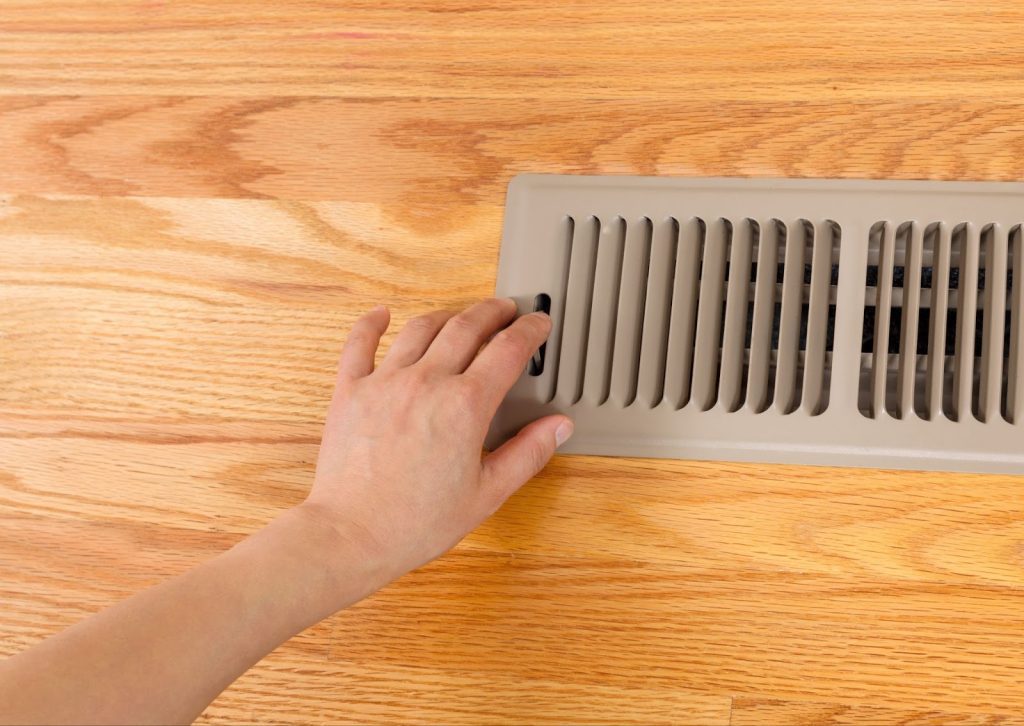
Benefits of traditional forced air heating
- Quick heating: These systems rapidly warm a room, providing immediate comfort.
- Air filtration: Equipped with filters, they improve indoor air quality by capturing dust and allergens.
- Versatility: Capable of handling both heating and cooling.
- Cost-effective installation: Particularly economical in new constructions where ductwork serves both heating and cooling needs.
- Enhanced comfort: Compatible with additional features like humidifiers and advanced air filtration systems.
Factors to consider
The efficiency of forced-air systems heavily relies on the condition of the ductwork; if ducts are poorly sealed or insulated, significant heat loss will occur. Regular maintenance, including filter replacements and duct cleaning, is essential to keep these systems running smoothly and maintain clean air quality.
Additionally, the operation of forced-air systems may be noisier compared to quieter radiant heating systems. Despite having filters, forced-air systems may still circulate dust and allergens, which could aggravate respiratory issues. Heat loss through ducts might render forced-air systems less energy-efficient than their radiant counterparts.
Choosing the right heating system for your home requires carefully assessing your home’s layout, personal comfort preferences, and potential long-term costs. Consulting with heating professionals and evaluating your home’s compatibility with each system will help determine the most suitable option for your needs.
Comparing radiant heating and traditional forced air
When it comes to choosing a heating system for your home, understanding the differences between radiant heating and traditional forced air is essential. Each system has unique benefits and considerations that may make one more appropriate for your home than the other.
Energy efficiency
Radiant heating is often lauded for its energy efficiency. The heat emanates from the floor and rises evenly throughout the space, which may result in lower thermostat settings and reduced energy consumption. It doesn’t rely on ducts where heat is often lost; therefore, the energy transfer is more direct and consistent.
Traditional forced-air systems may lose heat through ductwork, reducing overall efficiency, especially if the ducts are not properly sealed or insulated.
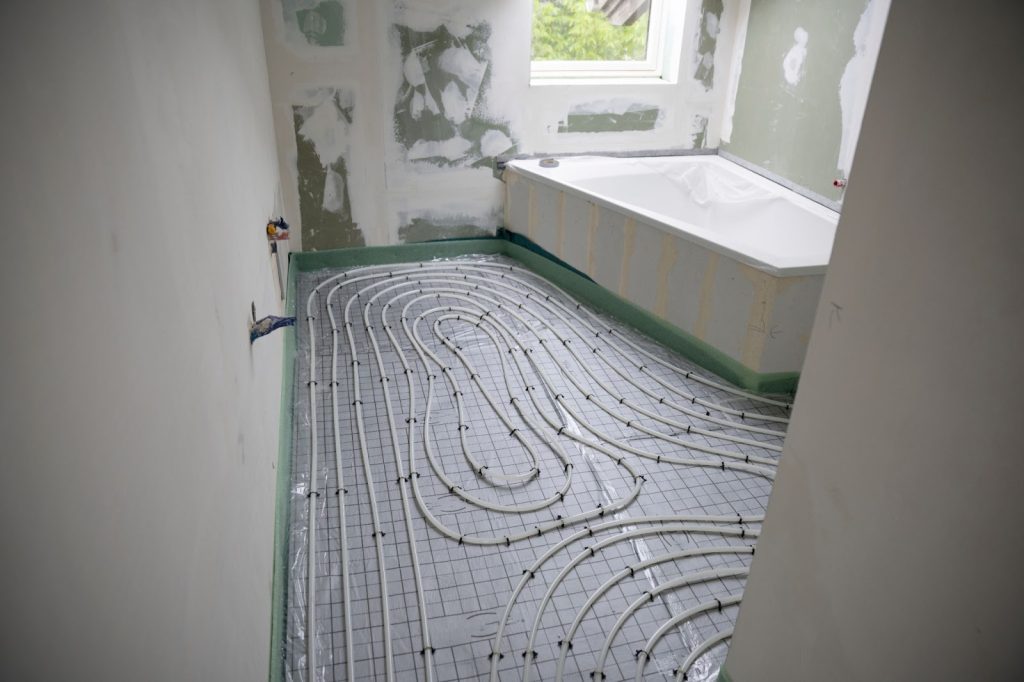
Comfort and indoor air quality
Comfort is a significant factor in the debate on radiant heating versus forced air. Radiant heat provides an even, gentle warmth, eliminating the cooler spots and drafts sometimes associated with forced air systems.
Radiant systems do not circulate air and do not spread dust, allergens, or odors, thus potentially improving indoor air quality. On the other hand, forced-air systems include advanced filtration to remove impurities from the air but may still contribute to air movement that circulates these particles.
Installation and maintenance costs
The upfront cost of installing a radiant heating system is usually higher than that of a traditional forced-air system, as the process is more labor-intensive, especially in retrofit scenarios. However, the long-term savings on energy bills offset the initial investment over time.
Maintenance-wise, radiant systems have fewer moving parts and may require less frequent servicing, while forced-air systems necessitate routine filter changes, duct cleaning, and other maintenance tasks to ensure efficient operation and good air quality.
Flexibility and zoning
Radiant heating systems offer exceptional zoning capabilities, allowing for precise temperature control in different areas of the home, which contributes to energy savings and personalized comfort.
Such zoned heating is more challenging with traditional forced-air systems, which typically heat the entire home to one desired temperature unless specialized zoning systems are installed. Moreover, forced-air systems offer the flexibility to integrate cooling into the same ductwork and support smart thermostats and other modern home conveniences.
When evaluating which heating system is best for your home, consider your immediate comfort, the long-term costs, maintenance requirements, and the particular characteristics of your living space. Whether you opt for the coziness of radiant heat or the versatility of forced air, ensure that your choice aligns with your lifestyle and budget.
Consulting with HVAC professionals provides valuable insight into your home’s most efficient and effective options. Remember to consider long-term utility costs and consult with your utility company or an energy auditor to understand potential savings. Contacting your insurance company to determine if either system might affect your homeowner’s policy is also prudent.
When embarking on home improvements, it’s critical to keep the broader picture in mind, considering how such upgrades might affect other aspects of homeownership, from mortgage processes to resale value.
Making the right choice for your home
Choosing the right heating system for your home is more than a matter of personal comfort; it’s a decision that impacts your household’s energy efficiency, air quality, and financial well-being for years to come.
Whether you lean towards the consistent warmth of radiant heating or the familiar whoosh of traditional forced air, weighing the pros and cons of your specific living space, budget, and lifestyle is essential. This guide will help you make an informed decision, considering everything from your house’s layout to your long-term financial goals.
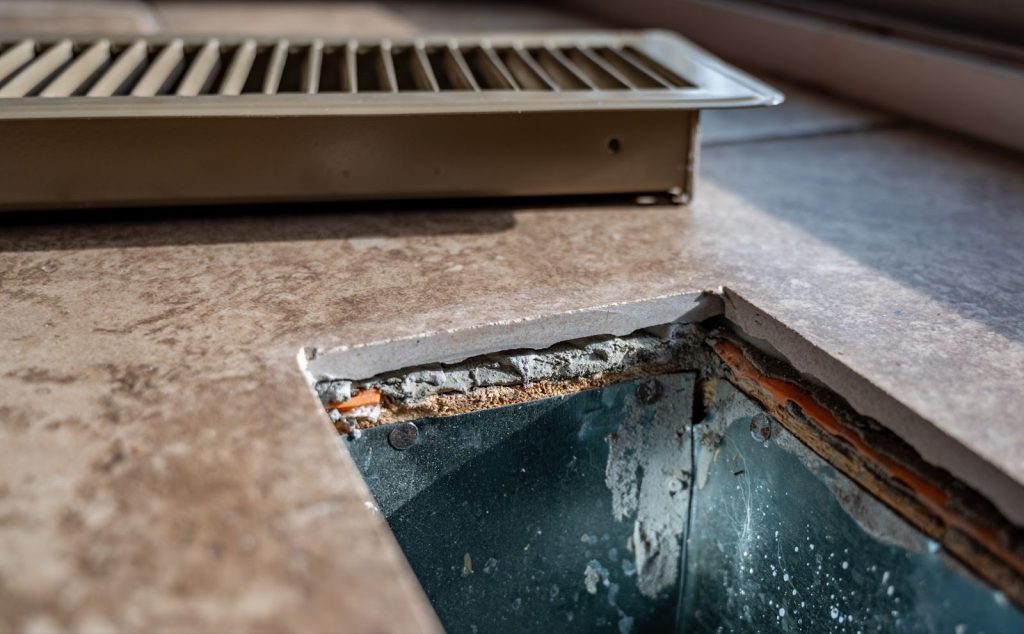
Assessing your home’s needs and characteristics
To decide whether radiant heating or traditional forced air is the best match for your home, carefully evaluating your home’s needs and characteristics is necessary. Consider the following elements:
- Floor plan: Open-concept homes may benefit from forced air’s rapid heating, while radiant heat’s zoning capabilities could better serve multi-room floor plans.
- Existing infrastructure: Homes with existing ductwork may find upgrading or repairing a forced air system more cost-effective. Conversely, homes without ductwork might be better suited for radiant heating.
- Insulation quality: Since radiant heating minimizes heat loss through ducts, well-insulated homes can maximize this benefit.
- Outdoor space: If your home includes significant outdoor living areas, forced air systems could more easily extend to heat these spaces.
- Climate: In colder regions, the consistent warmth of radiant heating may provide more comfort than forced air.
Assessing these aspects of your home offers insights into which heating system will enhance your living environment and optimize your energy use.
Consulting with HVAC professionals
After reviewing your home’s specifics, the next step is consulting with HVAC professionals. These skilled technicians conduct an in-depth analysis of your home’s current heating efficiency and provide estimates on the cost and energy savings of different heating systems.
They also offer information on the latest technologies and how these could be integrated into your home. Based on your home’s layout and local climate, they will provide tailored recommendations to ensure you choose the most suitable heating system.
Additionally, they may alert you to potential rebates from utility companies, tax incentives, or programs endorsed by insurance companies that could make certain heating systems more economically attractive. Such professional insights are indispensable to making a choice that respects your immediate needs and future plans.
Considering your heating preferences
Finally, your heating preferences play a vital role in the decision-making process. Reflect on these personal considerations:
- Comfort: Do you prefer the feeling of warm floors beneath your feet or the immediate warmth from a blast of hot air?
- Health: The reduced air movement from radiant heating could benefit those with allergies or respiratory issues.
- Aesthetic: Radiant heating provides invisible heating without vents or ducts, which might align better with your design preferences.
Your preferences are as important as technical facts. Make sure the system you choose feels right for your day-to-day experience in your home.
By examining the practical aspects of your living space, consulting with experienced professionals, and reflecting on what you value most in a heating system, you’ll be equipped to make a choice that will keep your home comfortable and your expenses in check for many years.
Trust Salisbury Plumbing
For expert advice and top-notch installation services of radiant heating systems, consider Salisbury Plumbing as your go-to resource. Our team of highly skilled professionals provides comprehensive support throughout your heating system upgrade process. From conducting detailed assessments of your existing heating setup to advising on and integrating the latest heating technologies, we cover all aspects to enhance your home’s comfort and efficiency.
At Salisbury Plumbing, we understand that updating your heating system is a significant investment. That’s why we’re committed to guiding you every step of the way, ensuring that you make informed decisions tailored to your specific needs. Trust us to equip your home with the most efficient and comfortable heating solution available, enhancing your living environment while optimizing energy use.
Reach out to Salisbury Plumbing today and experience a seamless transition to a superior heating system customized just for you.
toto slot

